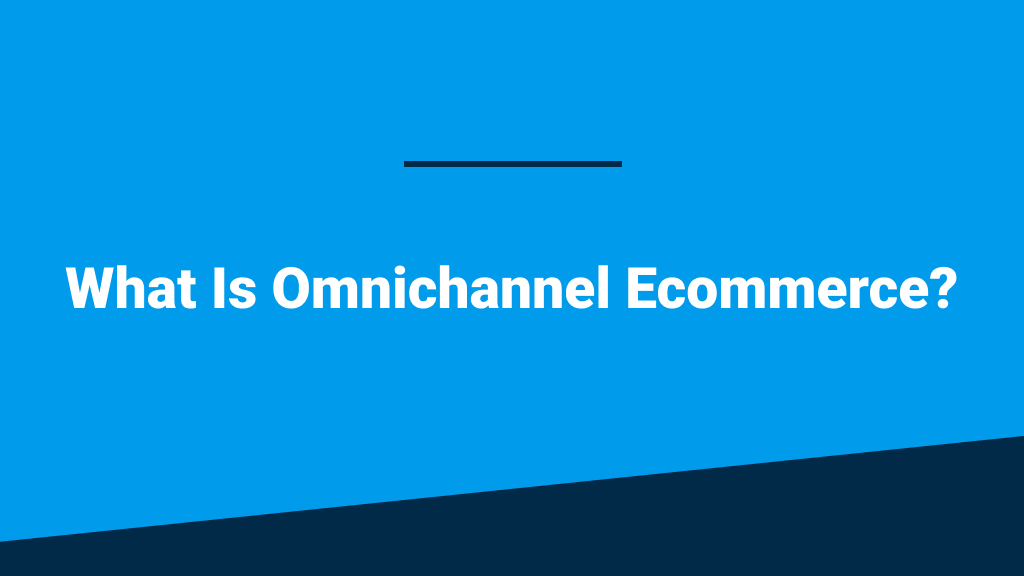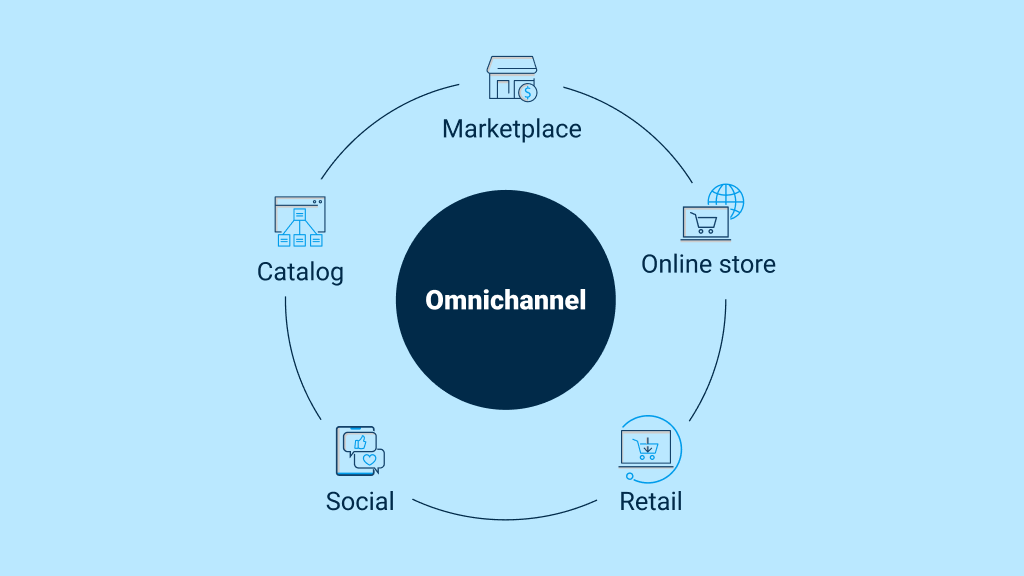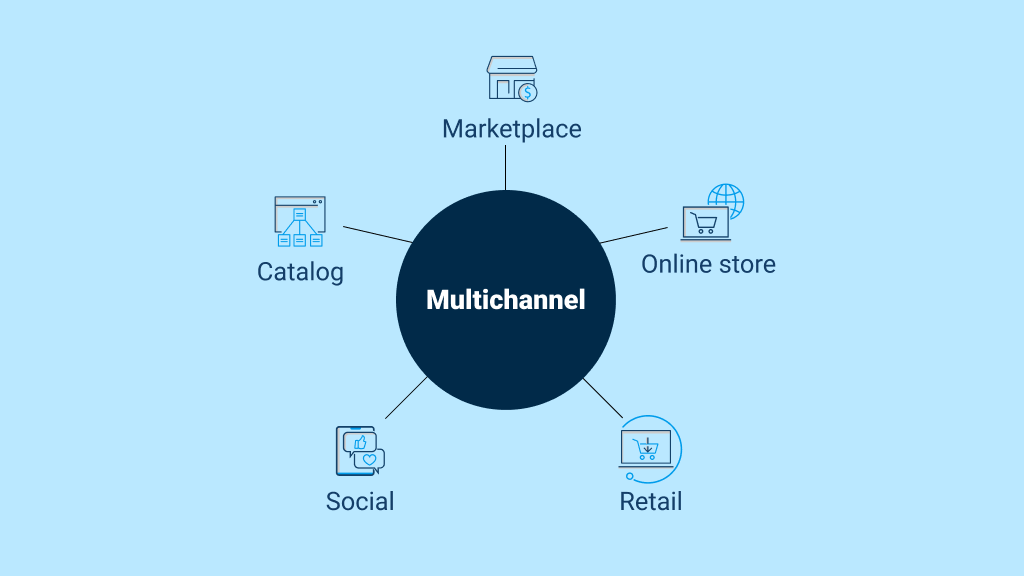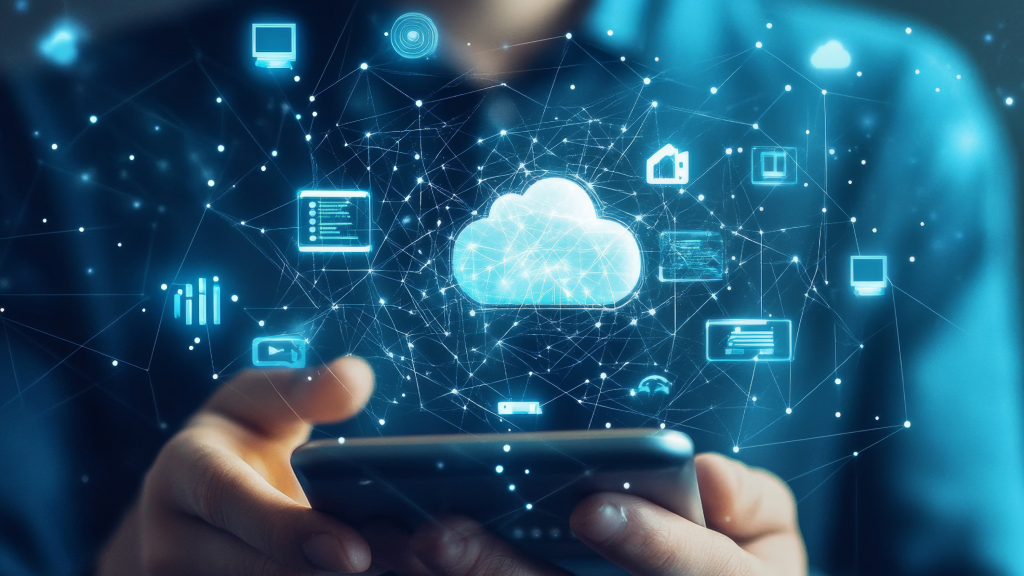
- Omnichannel ecommerce is the next stage of multichannel ecommerce. You still sell on many channels, but information is shared between them.
- Omnichannel merchants usually work with a brand, so it is vital that things like packaging and routing rules are unified for all channels.
- Online sellers can maximize their omnichannel potential by unifying their operations to one place with an ecommerce solution like Descartes Sellercloud.
‘Omnichannel’ is a hot buzzword in ecommerce, but not many know what it means. How is it different from multichannel? What are the benefits associated with omnichannel selling?
Many online shoppers can be considered ‘multichannel.’ According to a 2017 Harvard Business Review study, 73% of shoppers use multiple channels during their shopping journey. These shoppers will check several websites and marketplaces and compare product features and prices before purchasing.
The Harvard Business Review even goes so far as to call these shoppers ‘omnichannel shoppers.’ That was eight years ago. Today, that number is likely significantly higher.
In this article, we’ll explain omnichannel ecommerce, its benefits, common challenges, and the best practices to manage an omnichannel ecommerce business.
What Is Omnichannel Ecommerce and How Is It Different from Multichannel Ecommerce?

The most important thing to clarify early is how omnichannel ecommerce differs from multichannel ecommerce. In short, multichannel ecommerce is where you sell on many channels, while omnichannel is where you sell on many channels and information is shared across them.
Multichannel marketing is a strategy where ecommerce sellers use various channels to engage with customers and sell products. It is a highly effective strategy to reach more customers. Omnichannel marketing takes this further by seamlessly integrating channels into a unified customer experience. It covers every interaction with your business, from initial awareness to post-purchase, ensuring a cohesive and comprehensive strategy.
In a multichannel model, information is siloed, making it hard to learn about your customers. An omnichannel approach makes learning about your customers significantly easier, and that information can be leveraged in many ways. Omnichannel ecommerce is becoming more common and can be seen as the evolution of multichannel. Many companies are striving to offer customers an omnichannel experience.
An omnichannel approach can be important for businesses that sell a brand (their own or not). Unifying how your brand operates across marketplaces ensures consistency, and so things like packaging and routing rules must be unified wherever orders originate.
Multichannel sellers, on the other hand, buy and resell on different marketplaces but likely do not have their own brand or handle a specific line of products, so there is less need for a consistent approach.

The difference between multichannel and omnichannel can also impact how a warehouse operates. While a multichannel business may have to change how orders are fulfilled for different channels, an omnichannel business would strive for all processes to be the same regardless of the channel. To do this, they often rely on an ecommerce solution like Descartes Sellercloud.
A great example is ShipFlow, a 3PL that uses Descartes Sellercloud to manage its client’s orders across various marketplaces. In a testimonial, CEO Ezra Avidan explains how Descartes Sellercloud allows their warehouse workers to handle orders agnostically of the marketplace the product is sold.
“It could be a mix of all products. They don’t know where it’s going. They don’t know what goes with which channel it’s being sold on. Nothing. And that’s the beauty about it. We took out the human error,” he said. No longer do warehouse workers need to consider which channel orders originate and adjust their workflow as Descartes Sellercloud takes care of all these details. “[Warehouse workers] take the scanner, they put in the picklist ID, they just start scanning the UPCs,” says Avidan.
Are you still unsure about the differences between multichannel and omnichannel ecommerce? Check out this blog post on the topic.
What Are the Benefits of Omnichannel Selling?
There are many reasons why an ecommerce business would want to offer an omnichannel experience to customers. For example, with multichannel ecommerce, your marketing and customer experience approach might differ for each channel.
Omnichannel ecommerce allows sellers to learn more about their customers from the different touchpoints they have with their brand and personalize their offerings, which can nurture loyalty.
Another key thing to note is that consumers are increasingly more comfortable with direct-to-consumer (D2C) buying or from websites that are not marketplaces.
As an omnichannel seller, you can aim to lure customers from marketplaces to buy from you directly and get a bigger piece of the pie. You can do this by offering them something when they purchase from a marketplace, like redeeming a discount code offer from your website listed on a pamphlet packaged with the order.
Selling from your D2C site or brick-and-mortar is cheaper than through a marketplace which has additional fees.
An Omnichannel Approach Is Great for Brick-and-Mortar-Centric Businesses
Businesses with a brick-and-mortar location(s) have the most to gain from becoming omnichannel sellers, as many of the biggest benefits are for cross-online and offline selling. For starters, many shoppers still research products online and then purchase in-store, so your product listings could help with in-store sales.
The opposite is also true—physical stores can act as showrooms for customers to make later purchases online. However, omnichannel selling for brick-and-mortar goes much further than that and can help you capture a more significant share of customers that mix online and offline selling by making it easier.
The most well-known example of providing an omnichannel experience is offering Buy Online, Pick up In Store (BOPIS) and Buying Online, Return In Store (BORIS). Another great way is to show customers available inventory in-store and on different online channels. In addition, if it’s not available on your website or in your physical store, the stock could be available for Fulfillment by Amazon (FBA).
If you sell custom products, you can use your online store to allow customers to book appointments to go to the store. Brick-and-mortar stores can be turned into ‘smart stores’ to accommodate online shoppers—arguably the peak of the modern omnichannel experience.
One of the easiest ways to do this is to offer an ‘endless aisle,’ which is where a business allows in-store customers to order products that are out of stock or not typically sold and shipped to their homes. Endless aisles are usually offered in the form of a tablet or touchscreen kiosk.
Apparel stores can offer ‘smart fitting rooms’ where customers can try clothes and add them to an online shopping cart that they can access through a URL sent to their phone via SMS and then complete the purchase later. Shoppers can also compare variations of the products they want to purchase that were unavailable in-store, like different colors.
Another simpler way is to connect customers’ online and offline purchase histories. For example, their email or phone number can be used to connect an in-person purchase with their online account and allow them to view their complete history online. Doing this can drive repeat purchases online if the customer purchases something they liked in the store that they may not have noticed before online, for example.
Lastly, omnichannel sellers can divert customers who abandon their carts to different channels. For example, they can send cart abandonment emails with discounts to customers that can be redeemed in-store.
What Are the Challenges of Omnichannel Selling?
Omnichannel sellers encounter a multitude of challenges. Here are some of the most notable.
Listing Management
Managing product listings becomes more tedious and time-consuming as you expand to more sales channels. Each update—whether it’s price adjustments, adding or removing products, or ensuring certain items are excluded from specific channels or marketplaces—must be made consistently across all sales channels, and as close to real-time as possible.
The more products you add to your catalog and the more updates you need to make, the higher the risk of errors. This complexity only grows with dynamic pricing and frequent changes.
Adjusting to a Higher Order Volume
One of the first things you’ll notice when taking your business to new sales channels is that you’ll have more orders to deal with. An increase in order volume is obviously a good thing for an ecommerce business. However, it can quickly overwhelm operations. Warehouses may struggle to keep up, requiring more staff and better workflows.
Errors and delays multiply without an efficient warehouse management system (WMS). Additionally, frequent reordering is essential to maintain stock levels and meet growing customer demand.
Order Management
A knock-on effect from the above point is that as sales volume grows, the complexity of order management increases. Failing to adapt can lead to potential errors, delayed deliveries, and dissatisfied customers.
Managing orders across multiple channels is challenging because they can have different requirements. For example, some marketplaces might require delivery in a specific time frame while others do not.
Monitoring everything at once is difficult and time-consuming, and you can potentially miss orders. Routing orders to the most efficient fulfillment center or 3PL while maintaining compliance with each channel is a task that could require increasing staff if you don’t have a system to automate these processes.
Want to learn more about omnichannel order management? Check out Chapter 10 of our Order Management Guide.
Overselling
Overselling occurs when an item is sold online but not in stock. This often happens due to a lack of inventory synchronization across channels. This leads to canceled orders, frustrated customers, and potential marketplace penalties.
A high cancellation rate can even result in account suspensions that can kill your ecommerce business, especially if you are banned from a marketplace where you make the bulk of your sales.
Canceled orders can impact your brand beyond a specific marketplace. If you cancel an Amazon order, that customer might not want to buy your products on Walmart or elsewhere. Instead, they will find a more reliable brand to purchase from.
Want to learn more about omnichannel inventory management? Check out Chapter 8 of our Inventory Management Guide.
Consolidating Data and Accurate Reporting
Omnichannel selling generates data from various sources, which can be in inconsistent formats. This can lead to missing critical insights and duplicating customer records when buyers use multiple channels.
Sorting and analyzing this fragmented data is time-consuming, making it difficult to gain a clear, unified understanding of your business performance and customers. For example, you might not have a clear view of your products’ return rate because they are tracked separately for each channel. Ideally, your returns data should come to a central location to allow you to analyze it and address any issues you might have.
Customer Management
Customer information must be shared between platforms to create a genuinely unified omnichannel experience. However, it is not always possible, depending on the channel they use. For example, Amazon forbids third-party merchants from contacting customers outside of their platform. To Amazon, users of their marketplace are Amazon customers, not yours.
This makes it difficult for sellers to provide an omnichannel experience for customers from Amazon, as they cannot connect them to other points where they may have interacted with their brand.
Why Is Descartes Sellercloud the Best Ecommerce Solution for Omnichannel Sellers?

Serving as the backbone of your omnichannel strategy, Descartes Sellercloud simplifies daily tasks so you can focus on growth. A centralized point for ecommerce operations, Descartes Sellercloud is packed with features for omnichannel sellers to help them better manage their business, including:
- Listings and product management. Create products and manage your product information across channels to ensure brand consistency. You can even create ASINs from inside the Sellercloud user interface.
- Inventory management. Keep inventory in sync across channels to prevent overselling.
- Order management. Fulfill orders from multiple locations, manage returns agnostically, and optimize fulfillment processes.
- Order routing. Create rules to ensure orders reach customers in the most convenient way based on factors like location, inventory, and cost.
- And much more.
You can also check out Descartes Sellercloud’s family of products, such as our WMS Skustack, which helps improve warehouse efficiency and handle an increased workload, and Memaila, which gives your customer service team a unified inbox and platform to handle inquiries regardless of marketplace.
On top of that, Descartes Sellercloud integrates with 350+ essential tools, services, and marketplaces, offering unmatched flexibility to adapt to your unique needs. It’s more than software—it’s a comprehensive solution tailored for ambitious, multichannel ecommerce professionals.
Watch the video below to learn how Descartes Sellercloud has helped countless companies achieve their omnichannel goals.
Schedule a Descartes Sellercloud demo today.
Key Points
Let’s summarize the most essential points from this article.
- Omnichannel ecommerce is the next step of multichannel ecommerce. Information is shared between channels, creating a better customer experience, which can boost customer loyalty and overall business performance.
- An omnichannel approach is particularly great for brick-and-mortar-centric businesses because it empowers them to connect offline and online purchases and create a seamless experience between both.
- Overselling, adjusting to a higher order volume, order and listing management, reporting, and customer management are some of the biggest challenges to omnichannel selling.
- Businesses need an ecommerce solution, like Descartes Sellercloud, to make the most of omnichannel selling and focus on growth.




